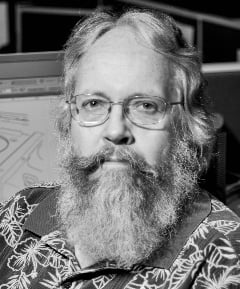La Crescenta and Consumption

lawlerdad@yahoo.com.
When we read the history of the Crescenta Valley, we often come across the term “consumption” as a disease, or hear of some pioneer being called a “consumptive.” The very founding of La Crescenta was tied strongly to consumption, with our founder Dr. Benjamin Briggs being driven by the disease – his wife died of it. He came to the valley to promote a cure for it and he probably died of it.
But what was this disease? We know it today as tuberculosis, but in the late 1800s it was a mysterious illness that seemed to “consume” the victim’s health and body – thus the name. In that period it was epidemic in the United States. The numbers are shocking. Roughly one in five deaths were from consumption, and it was the leading cause of death. It’s estimated that by the turn of the century, 80% of the population had been infected. Elusive to doctors of that time was the fact that the bacteria that caused the disease was airborne, transmitted by saliva when a consumptive coughed or sneezed. There was no cure for the disease and diagnosis of consumption was considered a death sentence.
And the death was a bad one. To doctors the disease was erratic. Once a diagnosis of consumption was made there was no way to know how the disease would progress. It could take months or years to die. It most often began with a dry cough and difficulty breathing. The cough would increase in intensity, exacerbated by ulcers in the throat and fevers. The consumptive would next begin to waste away, tortured by painful joints. The death itself could be as easy as simply stopping breathing or very ugly with a panicked feeling of suffocating or massive bleeding from the mouth and nose.
The only cure put forth by doctors of that time was dry clean air. This, combined with a prevalent fantasy of the west as an Eden of health and vigor, sent droves of “health seekers” scurrying westward to places like Arizona, Colorado, Southern California and the Crescenta Valley. Tens of thousands of invalids and consumptives streamed to the slopes of the San Gabriel Mountains, the so-called sanitarium belt made up of hospitals, resorts, hotels, and boarding houses, all hoping to attract health seekers from the east. Cynically intertwined with this were the promotion of real estate and the sales of railroad tickets. One promoter was typical of that notion.
Nathanial Carter was a consumptive who had come west to die but instead regained his health and pegged it on our miraculous climate. He worked with the Southern Pacific Railroad Company to promote “invalid trains” using before and after photos of himself to promote ticket sales. He used his considerable profits to found the town of Sierra Madre, a community he designed to attract wealthy consumptives. Pasadena too was founded on this scheme, and claims of cures went to the ridiculous. One promoter wrote: “I thought I came here to die. When I left home I had but one lung and it was almost gone. I have been two weeks in Pasadena, have three lungs, can roar like a descending avalanche, ate three mules for breakfast, and am going to try it for another week.”
All this promotion was taking place in the 1870s and by 1881 when Dr. Benjamin Briggs bought land this was already a successful formula. He did as other promoters/developers were doing – laid out a townsite and advertised land sales in an area that promised healthful air and a vigorous lifestyle for health seekers. Along the way he named his town Crescenta (the “La” was added later), established a school, church and hotel, planted trees, and attracted his wealthy friends and family to join him in this paradise. He had always intended to establish a hospital as well but his own health problems killed him (1893) before he could achieve that goal. However he paved the way for other doctors to establish sanitariums based in the clean and healthful air of the Crescenta Valley, attracting health seekers for generations to come.
